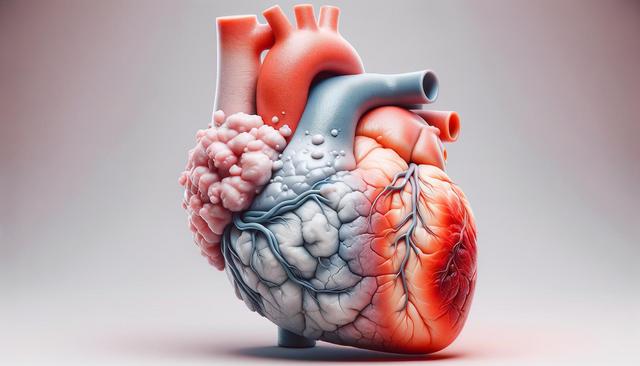Understanding the Connection Between Heart Attacks and Valve Health
A heart attack occurs when blood flow to part of the heart is blocked, often by a blood clot, leading to damage or death of heart muscle tissue. While this event is typically associated with coronary artery disease, it can have significant implications for heart valve function as well. One of the lesser-known outcomes of a heart attack is its potential to compromise the structural integrity of heart valves, leading to conditions such as mitral valve regurgitation. This condition arises when the mitral valve doesn’t close properly, allowing blood to leak backward into the heart. Recognizing the warning signs of leaky heart valve conditions early is crucial, as untreated valve issues can worsen over time and lead to heart failure or other complications.
After a heart attack, the heart’s pumping ability may be reduced, placing additional stress on the valves. In some cases, the papillary muscles that support the mitral valve can be damaged, directly causing valve leakage. Understanding how heart attacks can influence valve health underscores the importance of monitoring for early signs of heart valve leakage in patients recovering from such events.
Recognizing Common Symptoms of Valve Dysfunction
Heart valve disease can manifest in various ways, and being able to identify its symptoms early can make a significant difference in treatment outcomes. The symptoms of mitral valve regurgitation may develop slowly or appear suddenly, especially if the condition follows a heart attack. Key signs to watch for include:
- Shortness of breath, especially during physical activity or when lying down
- Fatigue and reduced ability to exercise
- Swelling in the ankles, feet, or abdomen
- Heart palpitations or irregular heartbeat
- A persistent cough, especially at night or when lying down
These heart valve disease symptoms can be easily overlooked or misattributed to other conditions, which is why regular medical evaluations are important, particularly for individuals with a history of cardiovascular events. Catching these signs early can prevent further complications and guide appropriate treatment plans.
Importance of Timely Diagnosis and Medical Evaluation
Receiving a proper leaky heart valve diagnosis involves a combination of physical examination, patient history, and specialized tests. Primary care providers or cardiologists may detect a heart murmur during a routine check-up, prompting further investigation. Diagnostic tools commonly used include:
- Echocardiogram (ultrasound of the heart)
- Electrocardiogram (ECG or EKG)
- Chest X-ray
- Cardiac MRI or CT scans
These tools help assess valve structure, function, and the degree of leakage. A prompt diagnosis can pave the way for effective treatment strategies, which may range from lifestyle changes and medications to surgical repair or valve replacement, depending on the severity of the condition. For those recovering from a heart attack, early detection of valve issues is especially critical for long-term heart health.
Managing Heart Valve Conditions After a Heart Attack
Following a heart attack, patients are encouraged to attend regular follow-up appointments and cardiac rehabilitation sessions. These provide opportunities to monitor not just the heart muscle but valve function as well. Preventive care and lifestyle modifications play a key role in managing valve-related complications. These may include:
- Adhering to a heart-healthy diet low in sodium and saturated fats
- Engaging in appropriate physical activity approved by a healthcare provider
- Managing blood pressure and cholesterol levels
- Avoiding tobacco use and limiting alcohol intake
- Taking prescribed medications consistently
By staying proactive, patients can reduce the risk of valve deterioration and maintain better heart function. Understanding and addressing early signs of heart valve leakage can greatly impact outcomes, especially when integrated into a broader post-heart attack care plan.
When to Seek Immediate Medical Attention
While some valve issues progress slowly, others can become urgent, particularly if symptoms worsen quickly. It’s essential to recognize when a valve problem requires immediate attention. Seek emergency care if you experience:
- Severe shortness of breath or difficulty breathing
- Chest pain or pressure
- Fainting or lightheadedness
- Sudden swelling or rapid weight gain
These could be signs of acute mitral valve regurgitation or heart failure, both of which require rapid intervention. Consulting a healthcare provider promptly ensures that a leaky heart valve diagnosis is considered and evaluated in the context of your overall heart health. Early intervention can prevent irreversible damage and improve quality of life.
Conclusion: Staying Ahead of Heart Valve Disease
Understanding the relationship between heart attacks and valve health is key to early detection and effective management. The warning signs of leaky heart valve conditions—such as fatigue, shortness of breath, and swelling—should never be ignored, especially in individuals with a history of cardiovascular issues. Monitoring for symptoms of mitral valve regurgitation and other heart valve disease symptoms allows for timely diagnosis and intervention. If you or a loved one have experienced a heart attack, be proactive in discussing valve health with your healthcare provider and pursue a thorough evaluation if any early signs of heart valve leakage arise. Timely leaky heart valve diagnosis and care can make a meaningful difference in maintaining long-term heart function and overall well-being.




Leave a Reply